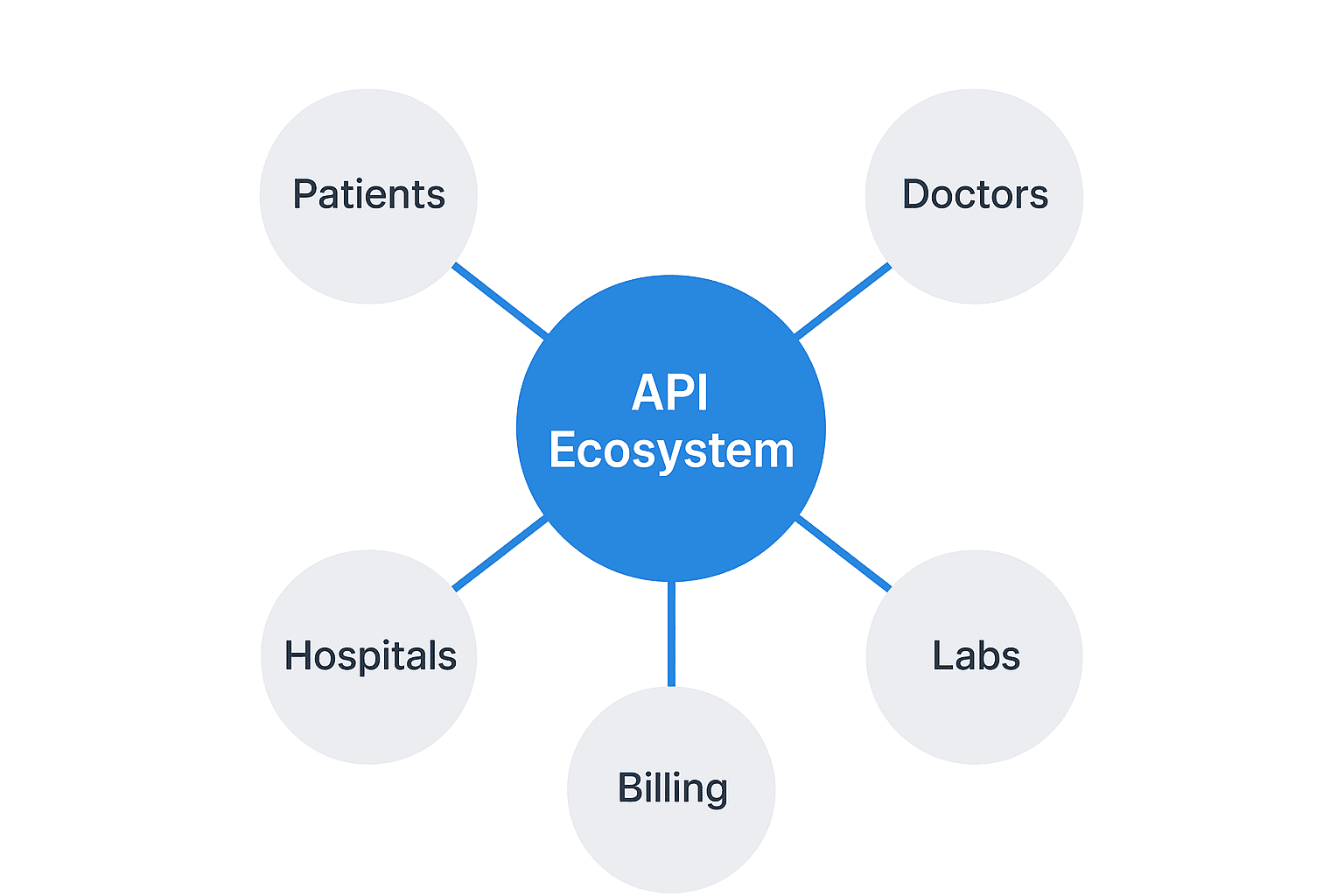Selling your GI & Hepatology practice is one of the most significant financial and professional decisions you will ever make. For practice owners in Oklahoma City, the current market presents a unique combination of opportunity and complexity. Succeeding requires more than just finding a buyer. It demands careful preparation, strategic positioning, and a deep understanding of what gives your practice its true value.
This guide provides a clear overview of the landscape for selling a GI & Hepatology practice in OKC. We will walk through the market conditions, key value drivers, and the process itself, giving you the initial insights needed to navigate your transition with confidence.
The Oklahoma City Healthcare Market: An Overview
The healthcare sector in Oklahoma City is not just growing; it is becoming increasingly competitive. This environment creates a strong seller’s market for specialized, high-performing practices. As an owner, you should be aware of a few key dynamics.
A Growing, Competitive Landscape
Oklahoma City is experiencing a notable expansion in its healthcare industry, marked by an increase in jobs and investment. For a seller, this competition is a good thing. It means multiple buyer groups, from large hospital systems to private equity-backed platforms, are actively looking for acquisition opportunities. This creates demand, but it also means buyers are sophisticated and perform rigorous analysis.
Demand for Your Specialty
Within this broader growth, specialized fields like Gastroenterology and Hepatology are particularly sought after. An aging population and greater focus on digestive health issues are driving patient demand. Buyers are eager to acquire practices with established patient panels and strong referral networks to meet this need. Your specialization is a key asset in this market.
Key Considerations for OKC Sellers
In a competitive market, what makes one practice stand out over another? Buyers in Oklahoma City look for well-run businesses with clear value. While every practice is unique, sophisticated buyers consistently focus on a few core strengths.
Your value is built upon your established patient base and your reputation in the community. Beyond that, buyers look at your referral networks with primary care physicians and other specialists, as these are indicators of future stability. We find that practices with profitable ancillary services, such as in-house endoscopy or infusion suites, command significant attention because they demonstrate multiple, stable revenue streams. The time to begin documenting and optimizing these strengths is now, long before you plan to exit. Buyers pay for proven performance, not just potential.
Market Activity and the Buyer Landscape
You are not operating in a vacuum. The Oklahoma City M&A market is active, evidenced by the number of professional firms dedicated to healthcare transactions. Understanding who is buying is the first step to crafting the right sales strategy. Buyers generally fall into three categories, each with different goals.
We see that finding the right partner depends entirely on your personal and financial objectives. Do you want to cash out completely or retain some ownership and continue practicing? Answering this question helps determine which buyer type is the right fit.
| Buyer Type | Primary Motivation | What This Means for You |
|---|---|---|
| Large Health Systems | Expanding service lines and securing referral streams. | They will focus heavily on your clinical reputation and patient integration. |
| Private Equity Groups | Financial returns and building a regional platform. | They will focus on your practice’s profitability (EBITDA) and growth potential. |
| Established GI Platforms | Gaining market share and adding strategic locations. | They will focus on how well your practice fits into their existing network. |
The Path to a Successful Sale
The process of selling a medical practice is a structured journey with distinct phases. While it may seem daunting, understanding the path forward can demystify the experience and help you prepare. The journey typically moves from internal preparation to external negotiation and closing.
It begins with Preparation, where you organize your financial, legal, and operational documents. This is followed by a professional Valuation to establish a credible asking price. Next, we would move to the confidential Marketing phase, where your practice is presented to a curated list of qualified buyers. This leads to Negotiation of offers and a letter of intent. Finally, the process enters Due Diligence, where the buyer verifies all the information you have provided before moving to a final closing. The due diligence stage is often where deals face challenges, making upfront preparation critical to a smooth and successful transaction.
Understanding Your Practice’s True Value
How is the value of a GI & Hepatology practice actually determined? It is not based on revenue or the value of your equipment alone. Sophisticated buyers value your practice based on its normalized cash flow, or Adjusted EBITDA (Earnings Before Interest, Taxes, Depreciation, and Amortization). This figure represents the true earning potential of the practice.
The final valuation is typically your Adjusted EBITDA multiplied by a specific number, the “multiple.” Here are three key factors that directly influence your valuation multiple.
-
Practice Scale and Profitability. In simple terms, higher and more stable profitability leads to a higher multiple. Buyers see less risk in practices with a proven track record of strong cash flow. Normalizing your financials to clearly show this is the first step to maximizing value.
-
Provider Structure. A practice that relies entirely on the owner-physician is viewed as riskier than a multi-provider practice. If you have associate physicians or PAs who will remain after the sale, it significantly increases your multiple because it ensures continuity for the new owner.
-
Your Growth Story. Buyers acquire practices for their future potential. A practice that can show a clear path to growthwhether through adding a new provider, opening a satellite office, or expanding ancillary serviceswill always command a premium valuation.
Life After the Sale: Planning Your Next Chapter
The final sale price is only part of the story. The structure of the deal has massive implications for your taxes, your future role, and your legacy. For many physician-owners, the concern is not just about money; it is about a loss of control or a negative impact on their team.
Fortunately, modern deal structures offer great flexibility. Control is not a simple on-or-off switch. Many deals include earnouts, where you can receive additional payments for hitting performance targets post-sale. Another common structure is rollover equity, where you retain a minority stake in the new, larger entity. This allows you to benefit from a “second bite of the apple” when that larger platform sells in the future. These structures can allow you to secure your financial future while ensuring your clinical autonomy and protecting the staff and culture you worked so hard to build. Planning for these outcomes from the start is key to a transition you can feel good about.
Frequently Asked Questions
What factors make a GI & Hepatology practice in Oklahoma City more attractive to buyers?
Buyers in Oklahoma City prioritize practices with an established patient base, strong community reputation, referral networks with primary care physicians and specialists, and profitable ancillary services such as in-house endoscopy or infusion suites. These factors indicate stability and multiple revenue streams, enhancing the practice’s appeal.
Who are the typical buyers for GI & Hepatology practices in the Oklahoma City market?
The main buyer groups include large health systems focusing on clinical reputation and patient integration, private equity groups prioritizing profitability and growth potential, and established GI platforms seeking to expand their market share and strategic locations. Choosing the right buyer depends on your personal and financial goals, such as cashing out completely or retaining partial ownership.
How is the value of a GI & Hepatology practice determined in Oklahoma City?
Practice value is based on normalized cash flow or Adjusted EBITDA (Earnings Before Interest, Taxes, Depreciation, and Amortization) rather than just revenue or equipment value. The valuation is calculated by multiplying the Adjusted EBITDA by a ‘multiple’ influenced by factors such as practice scale and profitability, provider structure, and growth potential.
What preparation steps should I take before selling my GI & Hepatology practice in Oklahoma City?
Start by organizing your financial, legal, and operational documents to streamline the sale process. Conduct a professional valuation to set a credible asking price, and prepare to market your practice confidentially to qualified buyers. Early documentation and optimization of your practice’s strengths are critical to attracting sophisticated buyers and achieving a successful sale.
What options exist for physicians regarding their role and financial interests after selling a GI & Hepatology practice?
Deal structures offer flexibility such as earnouts, which provide additional payments based on post-sale performance, and rollover equity, allowing you to retain a minority stake in the larger entity. These options can help secure your financial future, maintain some clinical autonomy, and protect your staff and legacy during the transition.



